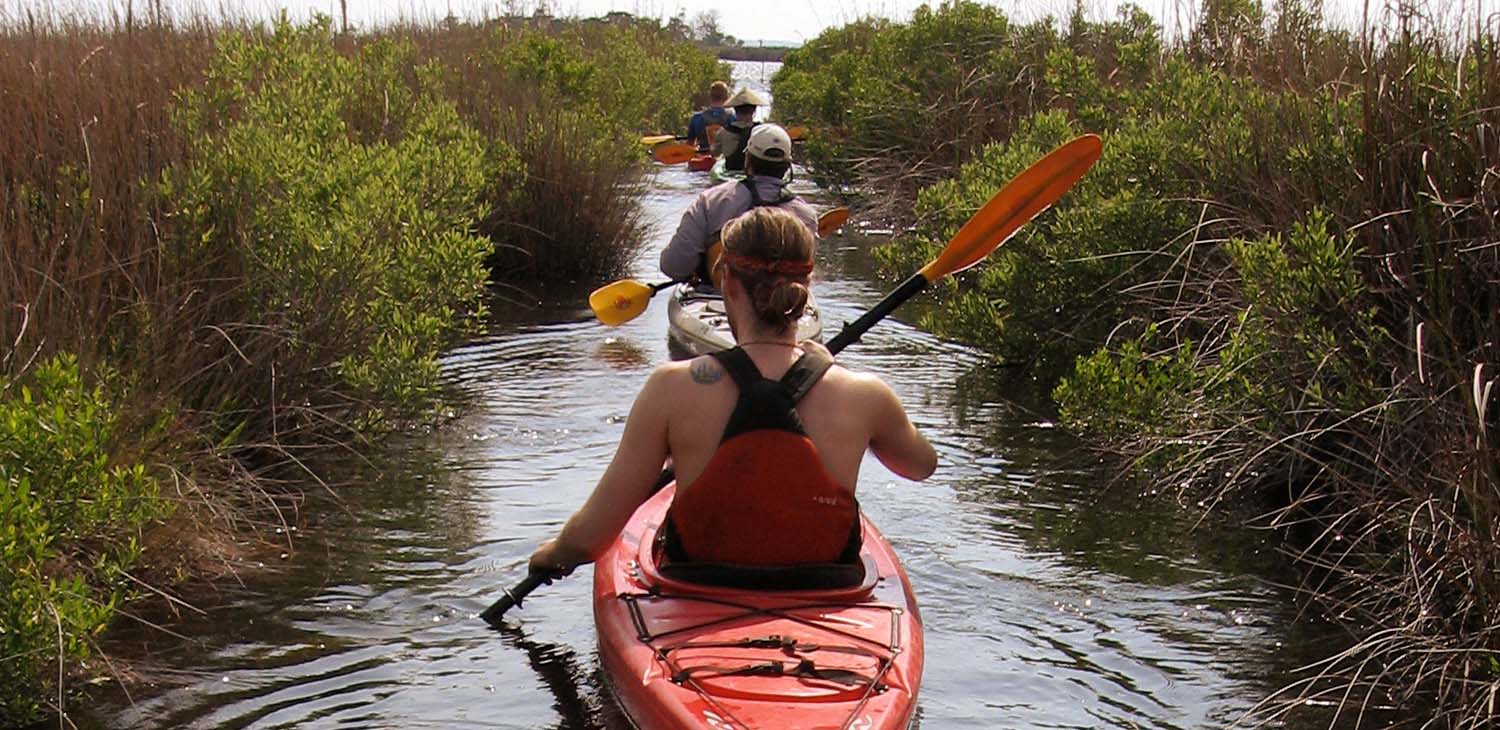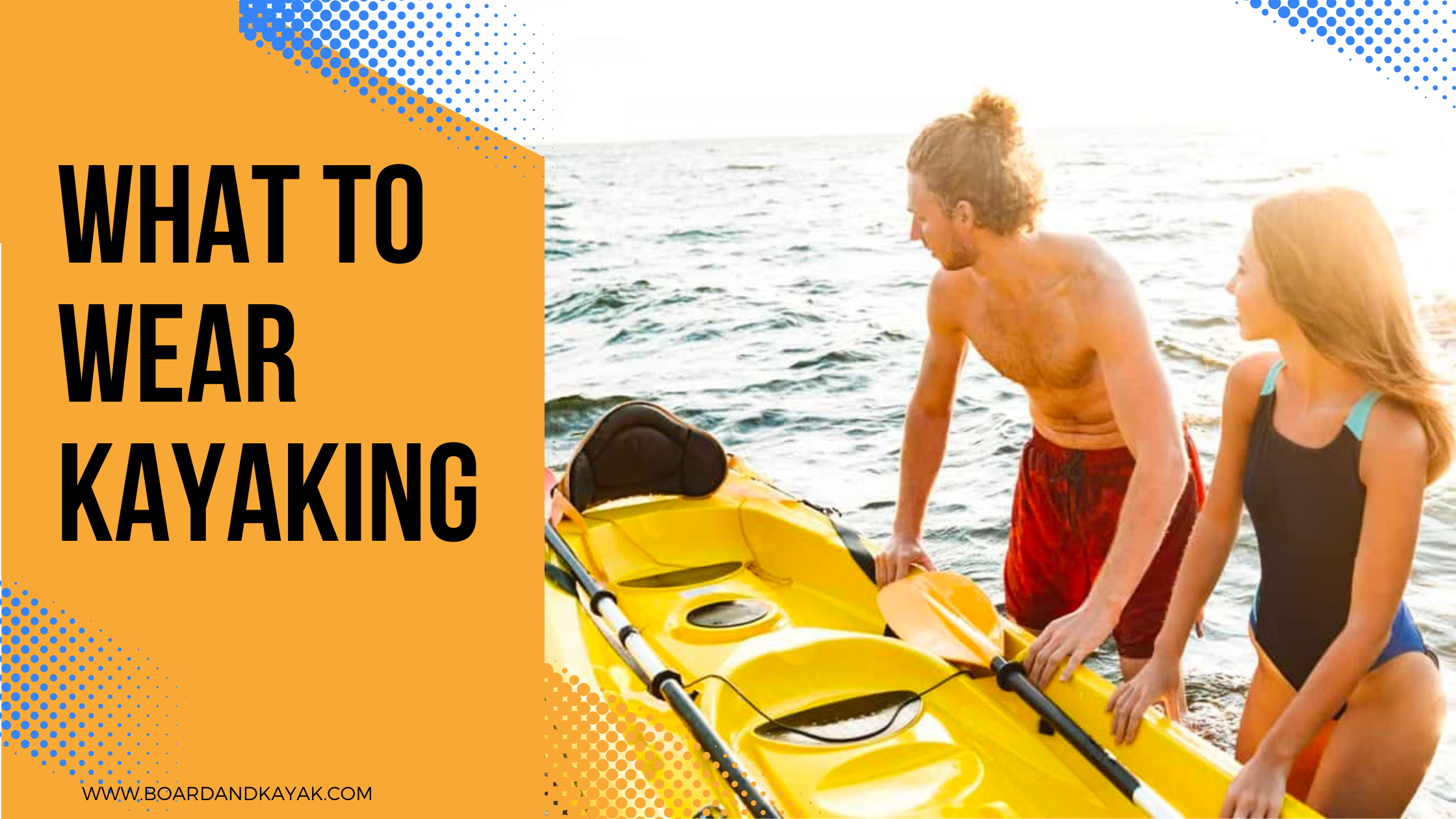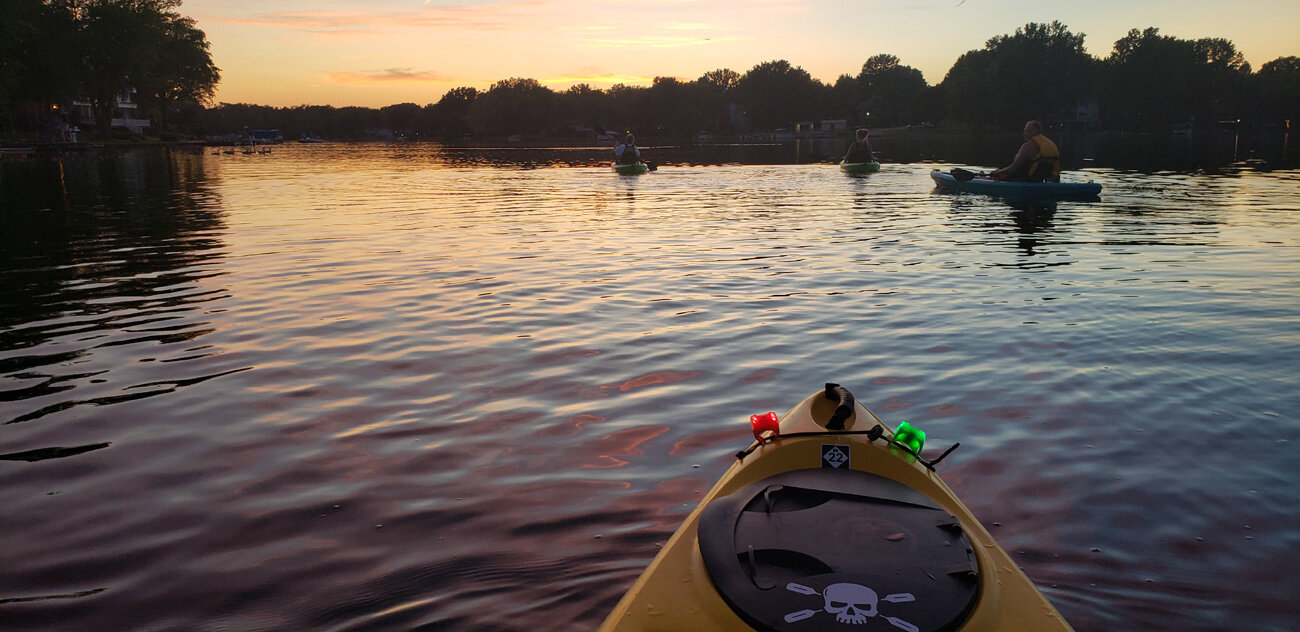
- Alabama
- Alaska
- Arizona
- Arkansas
- California
- Colorado
- Connecticut
- Delaware
- Florida
- Georgia
- Hawaii
- Idaho
- Illinois
- Indiana
- Iowa
- Kansas
- Kentucky
- Louisiana
- Maine
- Maryland
- Massachusetts
- Michigan
- Minnesota
- Mississippi
- Missouri
- Montana
- Nebraska
- Nevada
- New Hampshire
- New Jersey
- New Mexico
- New York
- North Carolina
- North Dakota
- Ohio
- Oklahoma
- Oregon
- Pennsylvania
- Rhode Island
- South Carolina
- South Dakota
- Tennessee
- Texas
- Utah
- Vermont
- Virginia
- Washington
- West Virginia
- Wisconsin
- Wyoming
Kayaking and Exercise: A Deep Dive into the Health Rewards
Is Kayaking Good Exercise
With roots tracing back to the Arctic's indigenous peoples, kayaking has traversed a long journey from being a survival tool to an Olympic sport and a popular form of exercise. First featured in the 1924 Paris Olympics as a demonstration sport, kayaking was introduced as a full medal sport in 1936.
Despite early setbacks due to World War II, kayaking blossomed in the subsequent years, securing a cherished spot in the sports world. Not only is kayaking an exciting, competitive sport, but it also offers numerous health benefits. This article delves into these benefits, examining how kayaking can enhance both your physical and mental health.
Is Kayaking a Good Workout? Paddle Your Way to Better Physical Health
The intersection of fun and fitness isn't always an easy one to navigate. However, kayaking strikes a unique balance, marrying the exhilaration of outdoor adventure with significant health-enhancing properties. In this section, we'll investigate the various ways kayaking can contribute to your physical health.
How Does Kayaking Benefit Your Heart?
Without a doubt, kayaking is an excellent cardio workout, providing substantial benefits for your heart. The action of paddling propels the kayak forward, and doing so (with gusto) can elevate your heart rate to levels comparable with more recognized forms of cardiovascular exercise such as jogging or swimming.
The beauty of kayaking is its categorization as a low-impact activity. This means that while it puts your cardiovascular system through its paces, it does so without placing undue stress on your joints. Regularly engaging in this form of cardiovascular exercise can strengthen your heart muscle, boost circulation, and reduce the risk of heart-related ailments.
Does Kayaking Increase Endurance?
Does Kayaking Increase Endurance?
The short answer is: yes. The repeated action of paddling a kayak, particularly over long distances or extended periods, can contribute significantly to the development of physical endurance. This activity necessitates a sustained level of effort—because you're consistently working against the resistance of the water.
As with all forms of exercise, consistency is key with kayaking. Over time, as you paddle more frequently, your body becomes more efficient, allowing you to kayak longer distances without succumbing to fatigue. Furthermore, your cardiovascular and muscular endurance improve as your body adapts to the regular physical activity.
How Does Kayaking Help You Build Muscle?
How Does Kayaking Help You Build Muscle?
Kayaking is an undeniably effective way to build muscle. When you kayak, nearly every muscle in your body is put to work, illustrating how kayaking is more than just a recreational activity—it’s a comprehensive form of exercise.
The paddling motion is primarily an upper-body workout. Your arms, shoulders, back, and chest are the primary muscle groups engaged as you guide your paddle through the water. Both your biceps and triceps are activated as you pull and push the paddle, while your back and shoulder muscles help power your strokes and maintain stability.
However, kayaking isn't exclusively about upper body strength. A proper paddling technique involves rotation of the torso and a stabilized lower body, meaning your abs, obliques, glutes, and even legs are activated as well. Thus, it's fair to say that kayaking can provide a full-body workout.
Is Kayaking a Good Way to Work Your Abs?
As stated, kayaking serves as a remarkably effective ab workout. When you're paddling, it's not just about using your arms. Your core plays a significant role in generating power with each stroke. As you rotate your torso and keep your kayak stable, your abs and obliques (the muscles on the sides of your abdomen) are continuously engaged.
Maintaining a correct paddling technique is crucial for maximizing this core workout. An effective stroke involves a rotation of the torso rather than just pulling with the arms. This rotation engages your core muscles more, contributing to their strength and endurance.
How Kayaking Increases Your Vitamin D
As an outdoor activity, kayaking is a great way to soak up some natural sunlight, which is necessary for your body's vitamin D production. Vitamin D plays a pivotal role in several bodily functions, including calcium absorption for bone health, immune system regulation, and potentially even mood stabilization.
While enjoying the sun's rays, remember to stay sun-safe. Apply sunscreen, wear protective clothing, and be mindful of the peak UV times in your area.
How to Improve as a Kayaker: How Do Professional Kayakers Train?
How Do Professional Kayakers Train?
Professional kayakers require a mix of strength, endurance, technique, and mental fortitude to succeed. Their training regimens often vary depending on the event they are preparing for, but certain fundamental strategies apply to all professional kayakers. Here are some key training strategies commonly employed:
- Paddling Technique Workouts: Perfecting the paddling technique is the bedrock of professional kayaking training. Kayakers spend countless hours on the water mastering their stroke technique, balance, and maneuverability. The right technique not only ensures efficiency but also helps to prevent injuries.
- Strength Training: A kayaker’s power comes from their core and upper body strength. Workouts often focus on the back, shoulders, arms, and core muscles. Exercises such as push-ups, pull-ups, deadlifts, rows, and planks are commonly used.
- Cardiovascular Training: Given the endurance nature of the sport, cardio workouts are vital. These can take the form of long-distance paddling sessions, running, swimming, or cycling.
- Flexibility and Balance Training: Yoga and Pilates are often incorporated into a kayaker’s training routine. These exercises improve flexibility, balance, and body awareness - all crucial elements for maneuvering a kayak effectively.
- Hypoxic Training: Hypoxic training involves exercises under conditions of reduced oxygen availability. It's used to improve aerobic performance and increase the body's efficiency in using oxygen. The theory is that training in a low-oxygen environment will stimulate the production of red blood cells, boosting the body's capacity to transport and utilize oxygen. This type of training can involve wearing a mask that restricts oxygen intake during workouts, or training at altitude. Hypoxic training should always be done under professional supervision due to the potential risks involved.
- Mental Training: Just as important as physical training, mental preparation helps kayakers stay focused, motivated, and mentally tough during long, grueling races. Strategies can include mindfulness exercises, visualization, and goal setting.
- Nutrition and Recovery: Lastly, professional kayakers focus a great deal on their diet and recovery strategies. A balanced diet rich in proteins, carbohydrates, and healthy fats fuels their workouts and aids in recovery. Adequate rest and recovery techniques such as foam rolling, massage, and cold water immersion help the body recover from intense training sessions.
Training like a professional kayaker is challenging and demands a high level of commitment. It’s also important to remember that everyone is unique, and what works for one person may not work for another. Always consult with a qualified trainer before embarking on a new training regimen, especially something as intense and specialized as professional kayaking training.
Beyond the Physical: How Kayaking Relieves Stress and Improves Mental Health
Physical fitness is undoubtedly a critical aspect of overall well-being, but mental health holds equal importance; kayaking's ability to act as a stress reliever is one of its most outstanding attributes. It's in this intersection of physical and mental health that kayaking truly shines.
How Kayaking Relieves Stress and Improves Mental Health
Paddling a kayak often leads you into a rhythm - a tempo through your surroundings often referred to as a "flow" state. This distinct state, similar to meditation, takes you to a level of increased awareness. You are fully present in the moment, disconnected from the usual rush and noise of daily life. As you paddle through the water, you may notice that your worries and anxieties slowly fade away. In their place, you find a sense of peacefulness and clarity. This perfect balance of effort, concentration, and calmness is what makes kayaking a unique benefit to your mental health. Below we will discuss the distinct ways kayaking can improve your mental health.
Gaining a Fresh Outlook Through Kayaking
One of the most overlooked aspects of kayaking is the change in perspective it offers. From the seat of a kayak, you can explore environments you might otherwise never experience. Whether it's gliding past a heron fishing in the shallows or admiring a stunning waterfall that's inaccessible by foot, these experiences can invigorate your spirit, boost your mood, and foster a sense of appreciation for the natural world.
Enjoy the Thrill of Social Interaction with Kayaking
Enjoy the Thrill of Social Interaction with Kayaking
While kayaking can be a serene solo endeavor, it also lends itself beautifully to social engagement. Kayaking in groups—whether for leisurely exploration, friendly competition, or simply sharing the experience—can enhance social bonds. Engaging with others while doing an enjoyable activity can alleviate feelings of loneliness, enhance feelings of community, and contribute to overall mental health improvement.
Boost Your Brain Power with Kayaking
The concentration required to navigate currents, maneuver your kayak, and maintain an efficient paddling technique can improve cognitive function. Engaging in physical activities like kayaking can stimulate the flow of blood and oxygen to the brain, potentially boosting memory, improving concentration, and enhancing cognitive abilities.
Experience a Surge in Happiness Hormones Through Kayaking
One of the fundamental benefits of any cardiovascular exercise, including kayaking, is the increased production of endorphins. These neurotransmitters, often known as the body's natural “feel good” hormones, help to reduce perceptions of pain and stimulate positive feelings in the body, creating a sense of happiness and euphoria.
Enhancing Holistic Health by Embracing Nature with Kayaking
Being immersed in nature as you kayak can confer a multitude of health benefits. Scientific studies have shown that spending time in natural environments can improve mood, increase energy levels, enhance sleep quality, and even boost the immune system. As you paddle through a tranquil lake or down a serene river, you're not only getting a fantastic workout but also bathing in nature's therapeutic effects.
Elevate Your Self-confidence and Self-esteem with Kayaking
Overcoming the initial learning curve of kayaking and improving your skills can bolster your self-esteem and confidence. The thrill of successfully navigating challenging currents or exploring new waterways can instill a sense of accomplishment, further enhancing your confidence. Seeing improvements in your physical fitness and paddling abilities can lead to an improved self-image, promoting overall mental well-being.
Final Thoughts
Kayaking is more than just a recreational activity
Kayaking is more than just a recreational activity—it’s a robust form of exercise that offers an array of health benefits. From providing an excellent cardio workout that strengthens the heart to building physical endurance and muscle, the physical health rewards are impressive.
Furthermore, kayaking's advantages extend into the mental health sphere. The calming effect of being on the water, the increase in "feel good" hormones, the cognitive challenges, and the confidence gained from mastering kayaking skills all contribute to improved mental health and well-being.
If you're looking for a new way to stay fit, improve mental health, and have fun, kayaking could be your perfect solution. So why not grab a paddle and give it a go? You're sure to enjoy the rewarding journey that kayaking offers.
Frequently Asked Questions
What are the health benefits of kayaking?
Kayaking is a good cardio workout that strengthens your muscles and improves your cardiovascular system. It's also a low-impact exercise that helps improve your posture and balance, and can even relieve back pain. Kayaking also offers mental health benefits, such as reduced stress and improved mood.
How many calories can you burn kayaking?
The number of calories burned kayaking depends on various factors, including your weight, speed, and intensity of paddling. On average, you can burn 350 to 500 calories per hour when kayaking.
Can kayaking work all parts of your body?
Yes, kayaking can work all major muscle groups in your body, including your arms, shoulders, back, abs, and legs. It's a full-body workout that can help you build muscle strength and endurance.
Is kayaking good cardio?
Yes, kayaking is a good cardio workout that can help improve your heart health and lung capacity. Since kayaking involves paddling against resistance, it can also improve your strength and endurance.
What are some tips for a good kayak workout?
To have a good kayak workout, you should focus on using proper form and technique, maintain a steady pace, and switch up your paddling style to work different muscles. You can also try different types of kayaking, such as whitewater kayaking or sea kayaking, to challenge yourself and vary your workout.
Is kayaking a good exercise for people with back pain?
Yes, kayaking can be a good exercise for people with back pain, as it is a low-impact activity that can help improve posture and relieve muscle tension. However, it's important to remember to maintain a good posture and, more importantly, consult with a healthcare professional before taking up kayaking if you have any existing health conditions.



![Kayaking in Trout Creek, Montana [2026 Guide]](https://shared-bucket-websites.s3.amazonaws.com/Trout-Creek,-Montana-1651787642041)






